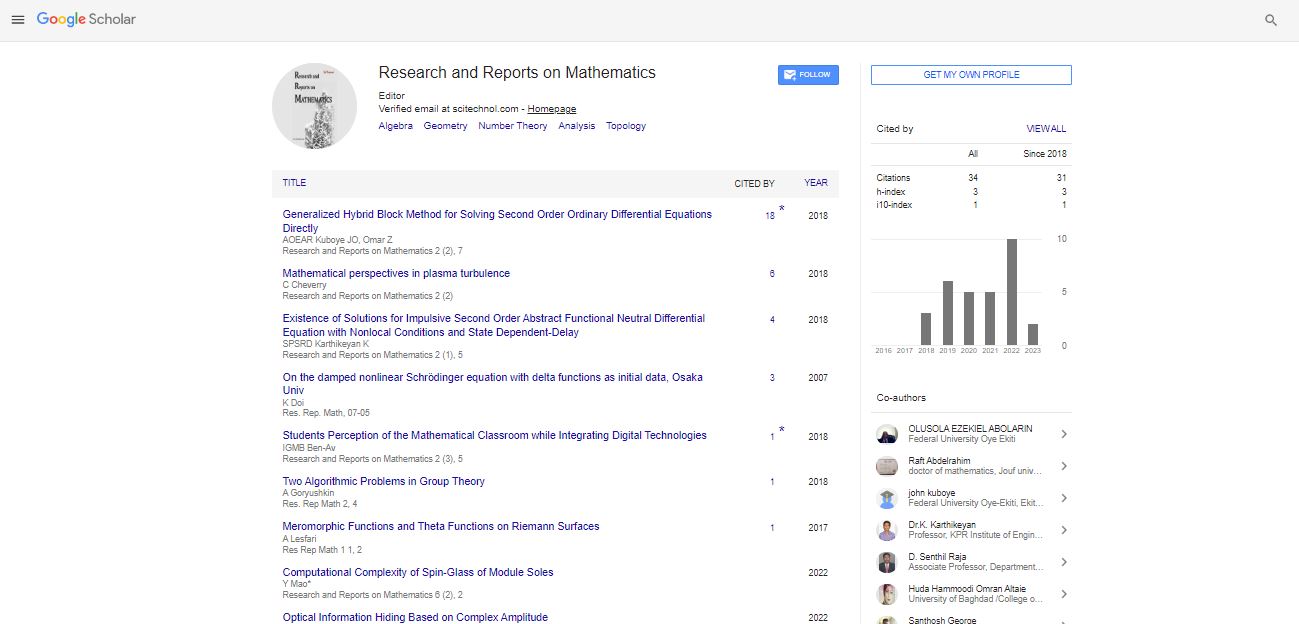none, Res Rep Math Vol: 5 Issue: 12
Squall Lines Creation Process and A New Zk-Ilw Equation for Algebraic Gravity Solitary Waves in Limited Depth Stratified Atmosphere
Hongwei Yang*
College of Mathematics and Systems Science, Shandong University of Science and Technology, Qingdao, China
*Corresponding Author:
Hongwei Yang
College of Mathematics and Systems Science, Shandong University of Science and Technology, Qingdao, China
E-mail: hwyang1979@163.com
Received Date: December 01, 2021; Accepted Date: December 06, 2021 ; Published Date: December 13, 2021
Citation: Yang H (2021) Squall Lines Creation Process and A New Zk-Ilw Equation for Algebraic Gravity Solitary Waves in Limited Depth Stratified Atmosphere. Res Rep Math 5:12. 140.
Copyright: © All articles published in Research and Reports on Mathematics are the property of SciTechnol, and is protected by copyright laws. Copyright © 2021, SciTechnol, All Rights Reserved.
Keywords: ? , curvature
Editorial Note
We analyse conformal immersions of weakly converging W1,2-maps Φk from a ball BR2 into R3. Under the assumption that a normal curvature term is negligible, i.e. if we have for some s for the normal map u (12,1)
Then we show that we can either go to the limit and have a nearly everywhere immersion Φ or we can collapse Φ and remain constant. This is consistent with T. Toro’s, S. Müller’s, V. Sverak’s, and F. Hélein’s findings, which achieved identical results under the stronger assumption that the second fundamental form is bounded (but also a stronger result: a locally bi-Lipschitz parametrization). The fractional normal curvature assumption is reminiscent of curvature energies such as the scaling-invariant limits of tangent-point energies for surfaces considered by Strzelecki, von der Mosel, and others, and we hope that the analysis in this paper can be used to define weak immersions with these kinds of energy bounds in the future.
The study of algebraic gravity solitary waves is a cutting-edge area with significant practical and theoretical implications in fields such as physics, oceanography, and aviation. Previous studies mostly concentrated on (1+1) dimensional models, with just a few (2+1) dimensional models being considered due to computation conditions and theoretical approach limitations. Using multi-scale analysis and perturbation approach in finite depth stratified atmosphere, a new ZK-ILW equation is developed from the non-static equilibrium equation in this study, which is the first time obtained. The model is the generalisation of the preceding two models and can be reduced to ZK-BO model (h→∞) and ZK model (h→0). We use the trial function method to obtain an analytical solution to the ZK-ILW equation and examine the conservation laws in order to better grasp the nature of algebraic gravity solitary waves. The fission process of algebraic gravity solitary waves is also investigated, and we can conclude that fission of algebraic gravity solitary waves is one of the possible squall line creation mechanisms.
One of the most popular research topics in the modern signal processing field is the study of novel signal processing techniques. The algebraic and geometric signal processing methods are among the most powerful tools for representing the traditional signal processing method. We present an overview of recent advances in the areas of algebraic and geometric signal processing in this study. The study focuses on the mathematical structures underlying signal processing; stressing the signal processing’s algebraic and geometric structure. The two most important issues were covered. First, the classical signal processing principles are linked to algebraic structures, and new results from the algebraic signal processing theory are discussed. Second, the latest developments in geometric signal and information processing representations related to geometric structure are discussed. Following these debates, it has been stated that research into the algebraic and geometric structure of signal processing can assist researchers in better understanding signal processing tools and in discovering novel signal processing methods in the signal processing community. Given that signal processing’s algebraic and geometric structure offers several advantages over traditional signal processing, its practical applications are projected to increase dramatically in the coming years.
 Spanish
Spanish  Chinese
Chinese  Russian
Russian  German
German  French
French  Japanese
Japanese  Portuguese
Portuguese  Hindi
Hindi 